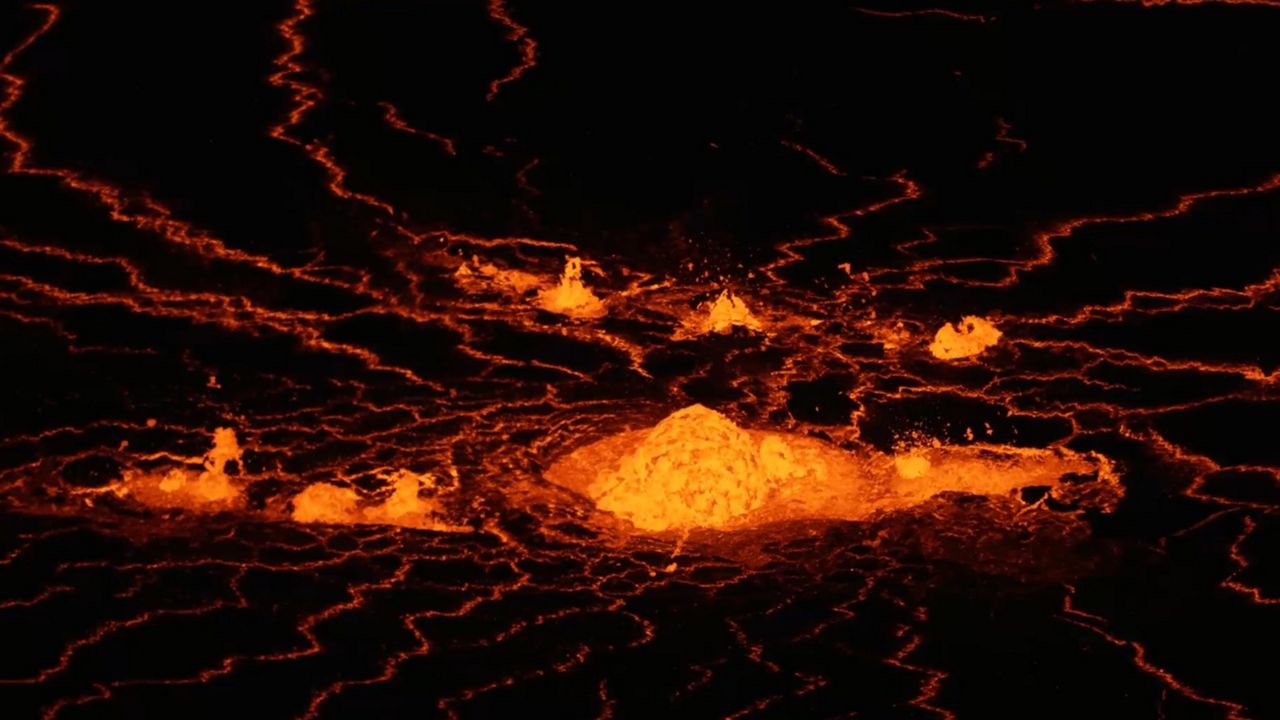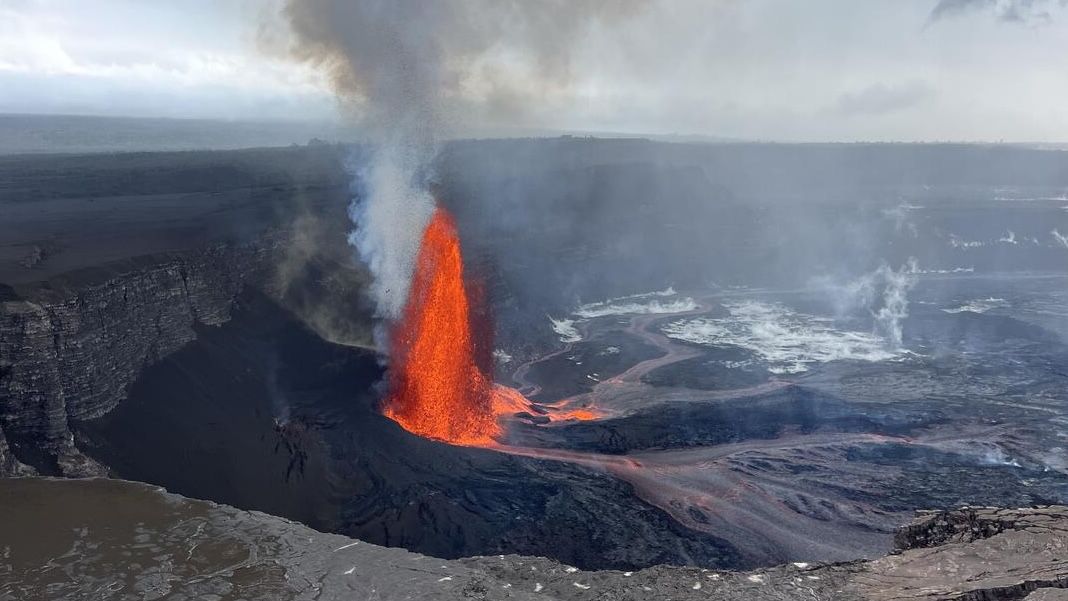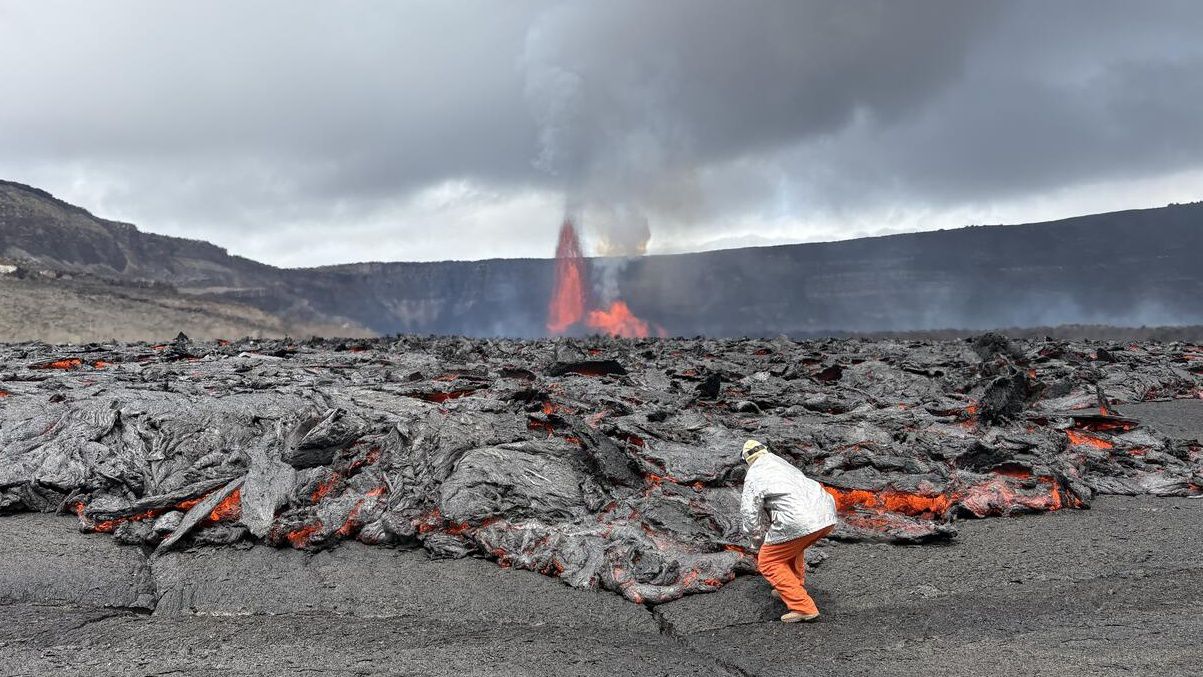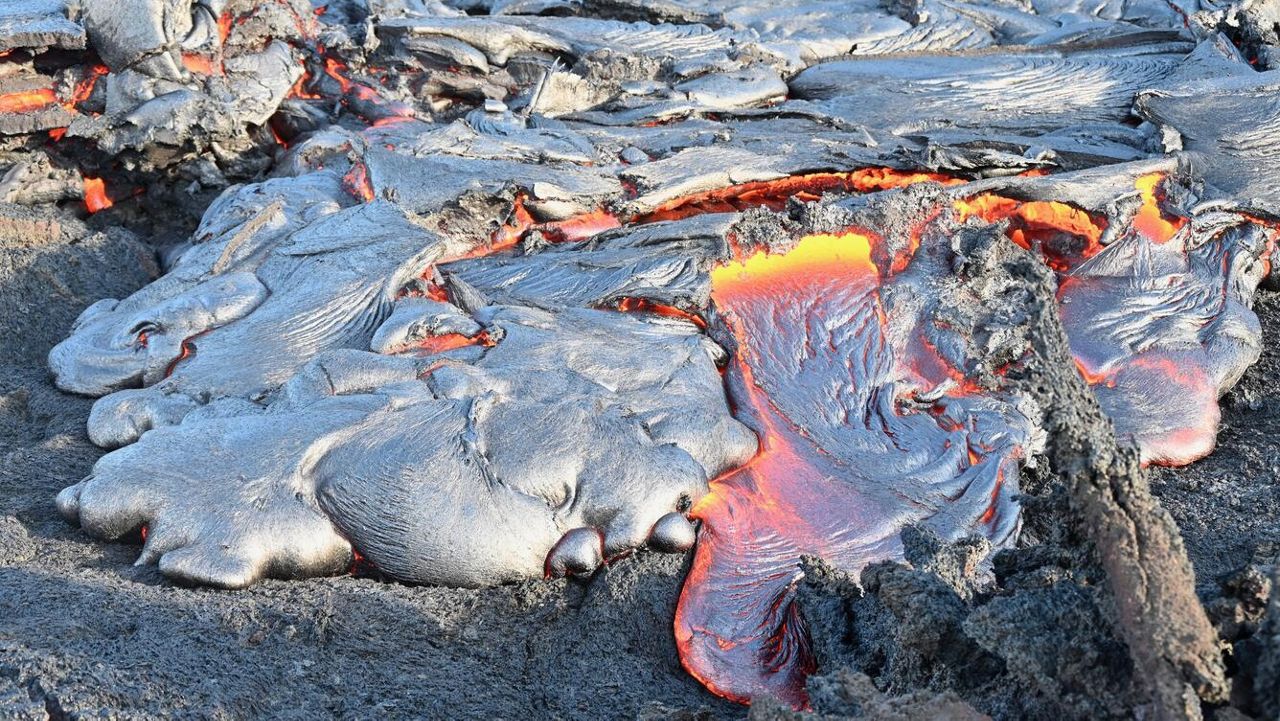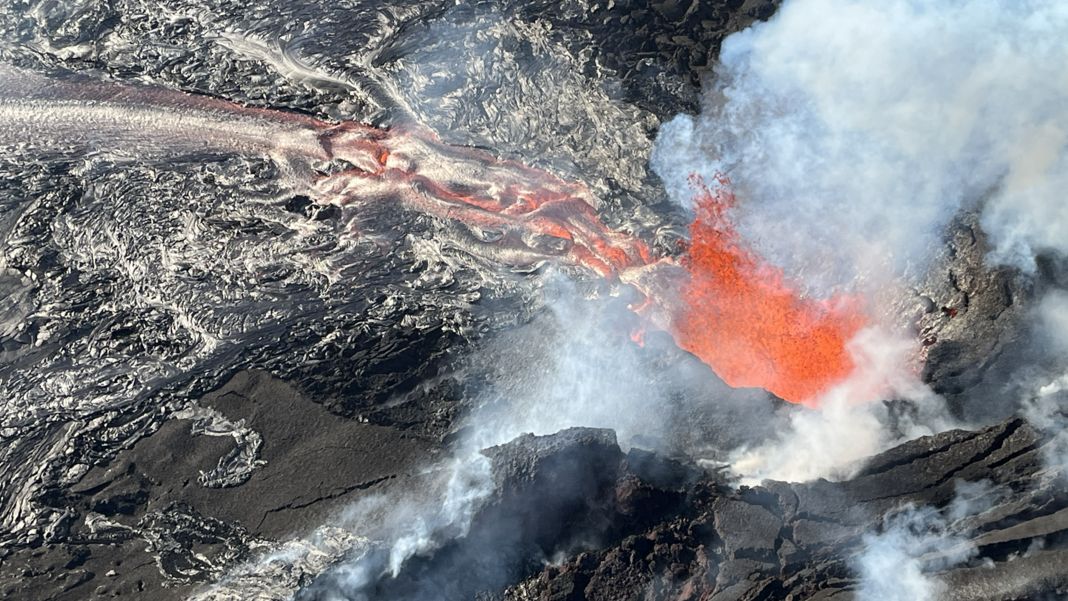HAWAII VOLCANOES NATIONAL PARK, Hawaii — Volcanic activity at Hawaii’s Kilauea continues to decrease, according to the Hawaiian Volcano Observatory’s Thursday morning update.
The eruption started Wednesday, June 7, within the Halema‘uma‘u crater in the summit caldera. Fountains of lava reached heights of 200 feet, spewing lava onto the crater floor and creating a “lava lake.” Lava fountains decreased later that day to heights of 13 to 30 feet.
As of Thursday, only one eruptive vent continues to effuse into the lava lake, which is located in the far southwestern portion of the crater. On Wednesday morning, there was weak lava effusion from another vent, but it has shown no signs of activity in the last 24 hours. The surface of the remaining lava lake continues to circulate and has been slowly rising, with an elevation increase of 1.5 feet over the past day.
The summit tilt is slightly deflationary as of Thursday morning, after moderately inflating late Wednesday morning. The inflation and deflation of the summit refers to changes in pressure in the Kilauea summit magma chamber, situated below the caldera. It is normal to see minor cycles of deflation and inflation at Kilauea that do not result in any eruptive changes.
Eruptive tremors continue at the summit, signaling fluid movement below the ground. The HVO does not make predictions on the duration of eruptions, but the last three eruptions at the Kilauea summit lasted five months, 14 months, and two months.
Volcanic gas emissions remain high, although not nearly as high as at the beginning of the eruption. Initially, HVO gas geochemists collected data that showed 65,000 tonnes per day of sulfur dioxide was being emitted from the volcano. On Wednesday, 5,300 tonnes per day were measured.
Michelle Broder Van Dyke covers the Hawaiian Islands for Spectrum News Hawaii. Email her at michelle.brodervandyke@charter.com.





